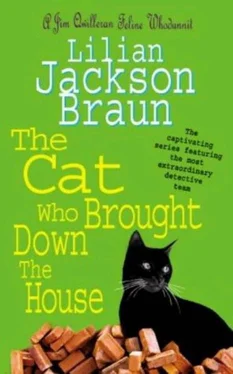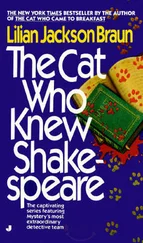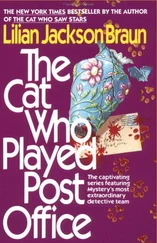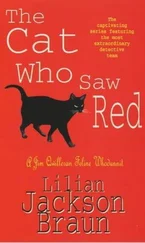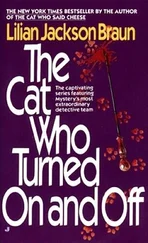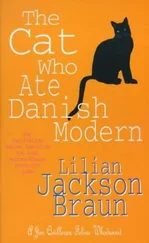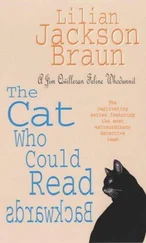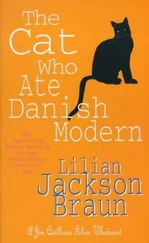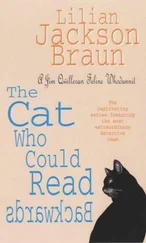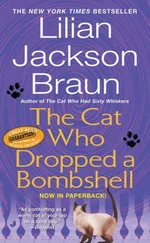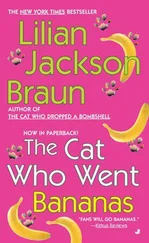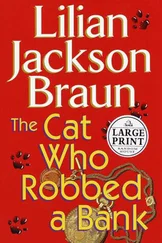Lilian Braun - The Cat Who Brought Down the House
Здесь есть возможность читать онлайн «Lilian Braun - The Cat Who Brought Down the House» весь текст электронной книги совершенно бесплатно (целиком полную версию без сокращений). В некоторых случаях можно слушать аудио, скачать через торрент в формате fb2 и присутствует краткое содержание. Год выпуска: 2003, ISBN: 2003, Издательство: Jove, Жанр: Старинная литература, на английском языке. Описание произведения, (предисловие) а так же отзывы посетителей доступны на портале библиотеки ЛибКат.
- Название:The Cat Who Brought Down the House
- Автор:
- Издательство:Jove
- Жанр:
- Год:2003
- ISBN:9780515136555
- Рейтинг книги:4 / 5. Голосов: 1
-
Избранное:Добавить в избранное
- Отзывы:
-
Ваша оценка:
- 80
- 1
- 2
- 3
- 4
- 5
The Cat Who Brought Down the House: краткое содержание, описание и аннотация
Предлагаем к чтению аннотацию, описание, краткое содержание или предисловие (зависит от того, что написал сам автор книги «The Cat Who Brought Down the House»). Если вы не нашли необходимую информацию о книге — напишите в комментариях, мы постараемся отыскать её.
The Cat Who Brought Down the House — читать онлайн бесплатно полную книгу (весь текст) целиком
Ниже представлен текст книги, разбитый по страницам. Система сохранения места последней прочитанной страницы, позволяет с удобством читать онлайн бесплатно книгу «The Cat Who Brought Down the House», без необходимости каждый раз заново искать на чём Вы остановились. Поставьте закладку, и сможете в любой момент перейти на страницу, на которой закончили чтение.
Интервал:
Закладка:
Qwilleran asked the head barber, “Do the police ever raid this joint?”
“When Andy Brodie comes in for a clip, he heads straight for the board and laughs his head off,” said Old Bob.
After Qwilleran’s session in the barber chair, he found Burgess and Alexander waiting for him on the patio.
“Got a minute to sit down, Qwill? I want to thank you for letting us have the reception in your barn.”
“My pleasure. But you’ve never visited the barn, and–as the host of the occasion—you should drop in and get the lay of the land.”
“Good idea! I can have a student driver take me over there any afternoon after three o’clock.”
“I assume you refer to an MCCC student who drives –and not a kid who’s learning to operate a vehicle.”
Burgess laughed heartily... and an appointment was made.
Chapter 6
Qwilleran had mixed feelings about Pleasant Street. Residents included some of his best friends, important in the community and known for intelligence and taste. They lived in large houses set well apart on one-acre lots –frame houses—painted white and lavished with white jigsaw ornamentation.
To Qwilleran, with his eye for contemporary, they looked like a collection of wedding cakes! Yet, the street had been photographed often and featured in national magazines as a fine example of Carpenter Gothic.
They had been built by the Campbells in the nineteenth century, and while the residents owned their dwellings, Burgess Campbell owned the land. That fact gave him a baronial interest in the neighborhood and the well-being of its occupants.
Now, Qwilleran felt it behooved him to take a closer look at Pleasant Street. He would bike, pedaling his vintage British Silverlight. With his slick red-and-yellow bike suit, yellow bubble helmet, sun goggles, and oversize moustache, he had been known to stop traffic on Main Street. (On one occasion a car back-ended another at a traffic light.) So he approached Pleasant Street via the back road.
It was a cul-de-sac, with a landscaped island at the end for a turnaround. The five houses on each side had broad lawns, and the serenity of the scene was enhanced by the fact that there was no curb-parking. Each dwelling had a side-drive with garage and visitor parking in the rear. There was a Wednesday-morning quiet: children at school, adults at work or doing errands or volunteer work. Others would be pursuing their hobbies. A contralto could be heard doing vocal exercises. The distant whine of a table saw meant that the woodworker was making a Shaker table.
Qwilleran biked twice up and down the street then stopped at the entrance to appraise the whole. No two houses were alike, yet they all had a vertical silhouette. There were tall narrow windows and doors, steeply pitched roofs over a third floor. Some had turrets. All had a wealth of ornamentation along roof lines, balcony railings, atop doors and windows.
Before leaving the scene he braked his bike and scanned the streetscape through squinted eyes. He was reluctant to admit that it had a kind of enchantment, like an illustrated edition of a book of fairy tales. Its residents included businessmen, two doctors, a college lecturer, an attorney, a professional astrologer, a musician, and an artist! Perhaps Burgess could explain the lure of Pleasant Street.
Qwilleran had time to take a quick shower, drop some crunchies into the plate on the kitchen floor, and wolf down a ham sandwich before his appointment with Burgess. Then, a few minutes before three o’clock, Koko rushed to the kitchen window. He sensed that a car was turning off Main Street, crossing the theatre parking lot, and meandering through the woods to the barn.
Qwilleran went out to meet it and saw the two front doors fly open. A dog jumped out the passenger door, followed by a man in lecture-hall tweeds. The driver, in jeans and T-shirt, emerged with an expression of rapt wonder.
“Hey, man! That’s some kinda barn!!”
Burgess said, “Qwill, this is Henry Ennis, chauffeur par excellence. Hank, you can pick me up at four o’clock.”
“Make it four-thirty,” Qwilleran suggested.
The driver said, “If you want me earlier, call the library. I'll be studying there.”
As he drove away, Burgess explained, “Hank is a scholarship student from Sawdust City. I reserve my second floor as a hostel for MCCC students without cars, who can’t go home every night.”
Burgess employed students part-time to read aloud –from research material, the New York Times, and student papers for grading.
Qwilleran said, “Okay! The tour starts here... On Sunday night parking will have to be here in the barnyard, and space is limited. So guests should be instructed to car-pool.”
Burgess made a note of it on a small recorder.
“Actually, this is the kitchen door, so someone will have to direct them around the barn to the front entrance. It’s a stone path, so women will find it kind to their high heels. I'm assuming it will be a dressy occasion... I suggest that guests assemble in the bird garden before going indoors. There are stone benches and flowering shrubs, and I think we can get Andy Brodie to play the bagpipe for a half hour.”
They went indoors, and Qwilleran conducted them through the large foyer, where the receiving line would be stationed... through the dining room, where Robin-O'Dell would have the refreshment table set up... past the snack bar with its four stools for guests who like to sit and lean on their elbows... through the library with its comfortable seating... and into the living room with its large sofas.
Burgess asked, “Where are the cats? I can tell they’re here—by the way Alexander is breathing.”
Qwilleran said, “They’re on the rafters, which are forty feet overhead. They’re watching every move we make.”
When all the decisions were made, and all the notes were recorded, they sat at the snack bar for cold drinks, and another story was taped for Short & Tall Tales.
HOW PLEASANT STREET GOT ITS NAME
In the nineteenth century my ancestors were shipbuilders in Scotland—in the famous river Clyde at Glasgow. When opportunity beckoned from the New World, my great-grandfather, Angus, came here with a team of ships’ carpenters considered the best anywhere. They started a shipyard at Purple Point, where they built four-masted wooden schooners, using Moose County’s hundred-and-twenty-foot pine trees as masts. These were the ‘tall ships’ that brought goods and supplies to the settlers and shipped out cargoes of coal, lumber, and stone.
Then came the New Technology! The wireless telegraph was in; the Pony Express was out. Railroads and steamboats were in; four-masted schooners were out. In his diary Angus said it was like a knife in the heart to see a tall ship stripped down to make a barge for towing coal. There was no work for his carpenters to do, and their fine skills were wasted.
Then a ‘still small voice’ told him to build houses! It was the voice of his wife, Anne, a canny Scotswoman. She said, “John, build houses as romantic as the tall ships—and as fine!”
She was right! The New Technology had produced a class of young upwardly mobile achievers who wanted the good life. Not for them the stodgy stone mansions built by conspicuously rich mining tycoons and lumber barons! They wanted something romantic!
So Angus bought acreage at the south edge of Pickax and built ten fine houses, all on one-acre plots. Although no two were alike, their massing followed the elongated vertical architecture called Gothic Revival, and the abundance of scroll trim was the last word in Carpenter Gothic.
And here is something not generally known: The vertical board-and-batten siding was painted in the colors that delighted young Victorians: honey, cocoa, rust, jade, or periwinkle; against this background, the white scroll trim had a lacy look.
Читать дальшеИнтервал:
Закладка:
Похожие книги на «The Cat Who Brought Down the House»
Представляем Вашему вниманию похожие книги на «The Cat Who Brought Down the House» списком для выбора. Мы отобрали схожую по названию и смыслу литературу в надежде предоставить читателям больше вариантов отыскать новые, интересные, ещё непрочитанные произведения.
Обсуждение, отзывы о книге «The Cat Who Brought Down the House» и просто собственные мнения читателей. Оставьте ваши комментарии, напишите, что Вы думаете о произведении, его смысле или главных героях. Укажите что конкретно понравилось, а что нет, и почему Вы так считаете.
